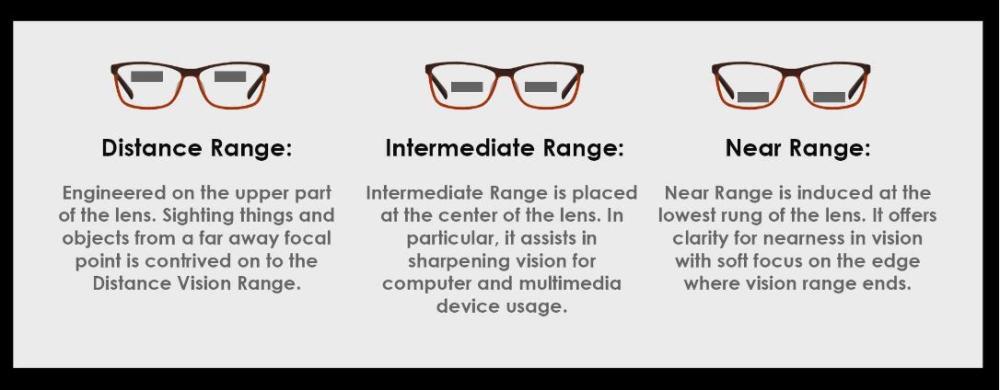

Your vision is a fragile commodity that reacts to its weakening process as soon as we age. Here, it is inevitable to shed light on “myopia” that brings this effect of ineffectiveness into action. Be it the far-sighted or near-sighted deficit, using the right lenses is a key in restoring vision back to its reasonable state.
However, at times, especially for first-time glass wearers, the optimal adaptability to certain lenses becomes a tapestry.
Some spec wearers debut into eyewear saga with bifocal lenses. Later, when they acquire vision variation with varifocals or bifocal lenses, their shift from the two-way vision lenses (Bifocals) to three-way vision (Varifocal) lenses becomes exceptionally difficult.
Generally, the issues that arise after incorporating the new varifocals are blurry vision, headache, and dizziness that become a constant hassle for glass-wearers.
Varifocal Lenses - The Phenomenon of 3-Way Vision:
Let’s be honest. The invention of varifocal lenses has saved glass-wearers from carrying multiple frames for varied vision ranges. This vision-altering gift is comprised of 3 different ranges: distance, intermediate, and reading which ensures that the glass-wearers get to read text, use electronic devices, and see from the considerably faraway vantage very easily, efficiently, and clearly.
The phenomenon of using lenses empowered with triangular vision ranges is its perfection in building the right vision at the time of walking, reading, driving, or simply using devices. Moreover, it includes the “Intermediate” range which forms up in between Distance and Reading ranges. The right varifocal lenses help in ironing out “Image Jump” which is the root cause of changing the lined bifocals. Likewise, optometrists recommend wearing varifocal lenses in a continuum at first to adjust to its three-way range and visual movement.
Varifocal Lenses - Opting For The Best Adjustments:
1 - Invest time with continuity: tame your pupil according to the bars of vision with varifocal lenses.
2 - Mark the induction of varifocal lenses in daily habits such as reading a book or using multimedia devices to challenge your new nearsightedness which will partake in its new calibration.
3 - Don’t underestimate the essentiality of “Frame Fitting”. Ensure your glasses do not slide down or pucker your face.
4 - When you’re engrossed in reading, keep the material 16 inches away and use the bottom part of varifocals to read.
5 - Do not walk with your head tilted downward. Instead, look straight and enhance vision clarity with these lenses.
6 - Keep your computer screen range below the eye levels. This can be done by moving the desk or the computer chair.
7 - With varifocal lenses - it is reckoned to turn pages and reposition the reading material instead of agile pupil movements.





